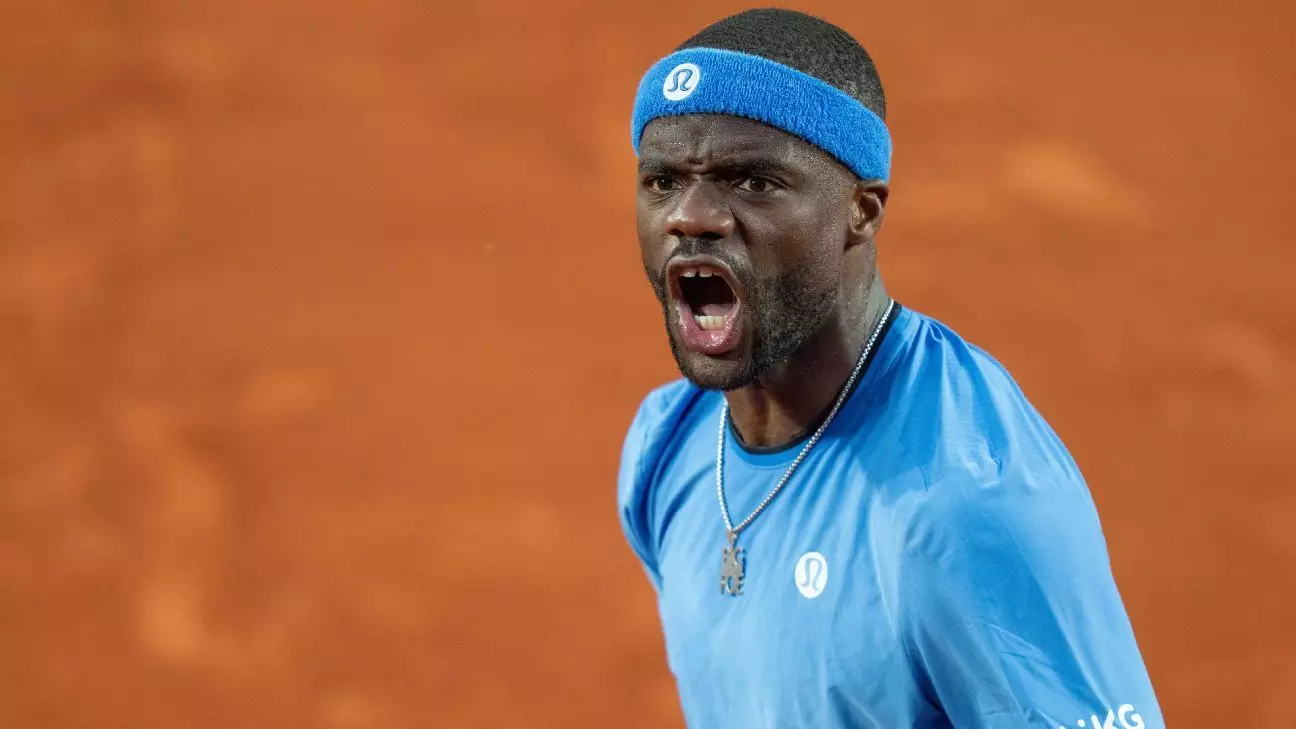Frances Tiafoe entered the French Open with a distinct lack of enthusiasm for clay courts, a surface he had historically struggled with. In an interview prior to the tournament, he openly expressed his desire to transition to the grass courts and hot summer hard courts, where he felt his playing style could shine. Yet, in sports as in life, the tides can change rapidly, and Tiafoe’s journey illustrates the unpredictable nature of athletic competition.
With a remarkable performance, the 15th-seeded Tiafoe broke through barriers that had haunted him throughout his early career. He triumphed over Daniel Altmaier of Germany in a straight-sets victory, a feat marked not just by the scoreline of 6-3, 6-4, 7-6 (4), but by the sheer drama and intensity that accompanied his journey into the quarterfinals. Tiafoe’s success is not just a personal breakthrough; it represents a resurgence of American men’s tennis on the Grand Slam stage, as he and fellow American Tommy Paul created history by placing two U.S. men in the Paris quarterfinals for the first time since 1996.
Redemption Through Resilience
Tiafoe’s ascent is layered with a backstory of struggle. Before this tournament, his record on clay was disheartening—a disastrous 0-6 as he grappled with the slower surface, which often made him feel bogged down and forced him into a less aggressive playing style. His admission of struggling with patience on clay speaks volumes about his mental state and it showcases the depth of character required to adapt to unfavorable conditions.
Yet, in an admirable transformation, he displayed not only skill but a seasoned maturity. He didn’t just believe he could compete; he embraced the challenge of the clay, adapting his game to find the subtle advantages hidden within. By acknowledging his shortcomings and evolving, he propelled himself into a new echelon—one that allows him not only to dream of victory but take tangible steps toward achieving it.
The Experience of Belief
At 27, Tiafoe embodies the grit that comes from years of learned lessons in professional sports. His humorous outlook on the unpredictability of tennis captures his resilience; he believes that when faced with adversity, he tends to bring forth his best performances. There’s wisdom in that belief—sometimes a player needs to reach the brink of defeat to reignite the passion and drive necessary for success.
While many athletes shrink under pressure, Tiafoe seems to thrive, with the understanding that tennis can dramatically shift its landscape in a week. His unwavering confidence is not unfounded; during his career, he has found ways to topple higher-ranked opponents on any given day. This palpable self-belief was clearly evident when he celebrated his most recent victory, joyfully shouting expressions of elation rather than frustration.
The Road Ahead: Victory or Valiance
Looking forward, Tiafoe faces an upcoming match against formidable opponents Lorenzo Musetti or Holger Rune—both young talents who will bring their own challenges to the court. This next round represents not merely a stepping stone but a potential litmus test for Tiafoe’s newfound resolve and adaptability on clay.
In tandem with Tiafoe’s efforts, the U.S. women’s contingent shines brightly in the tournament, showcasing a promising new generation of American tennis stars. With Coco Gauff, Jessica Pegula, and Madison Keys poised to make their mark, the excitement surrounding American tennis is palpable. The National Tennis Center is buzzing with an electric undercurrent of possibility, a feeling that American players can reclaim their legacy on this grand stage.
As Tiafoe presses on through this pivotal tournament, many are left wondering if this journey can yield not just further victories but a transformation of tennis culture in America—a return to prominence that celebrates tenacity, passion, and the spirit of competition that captivates audiences worldwide.

